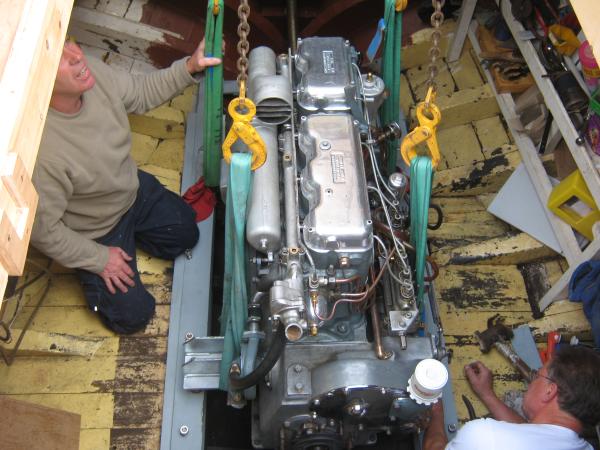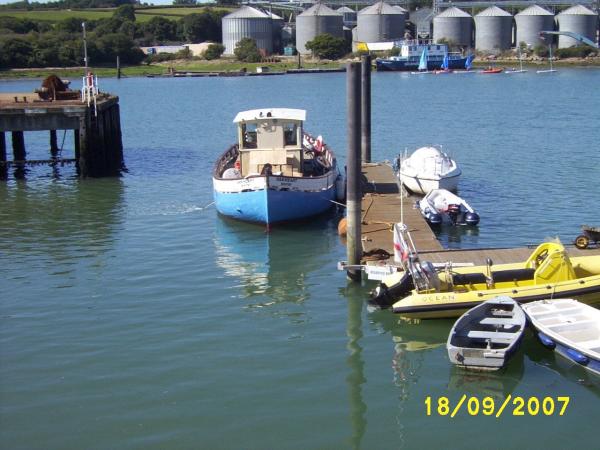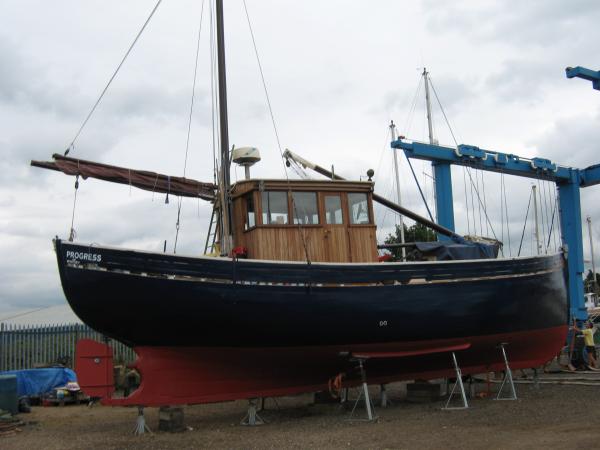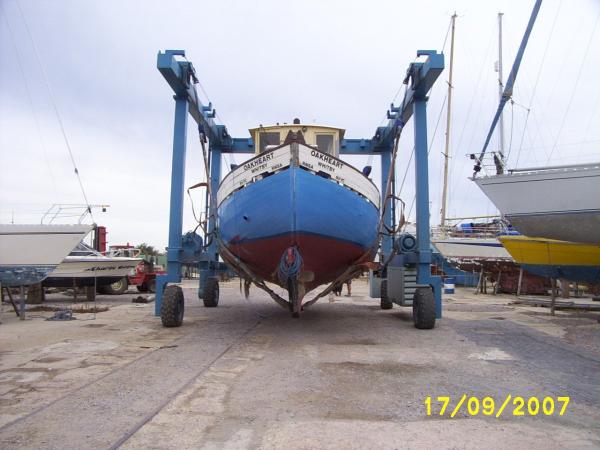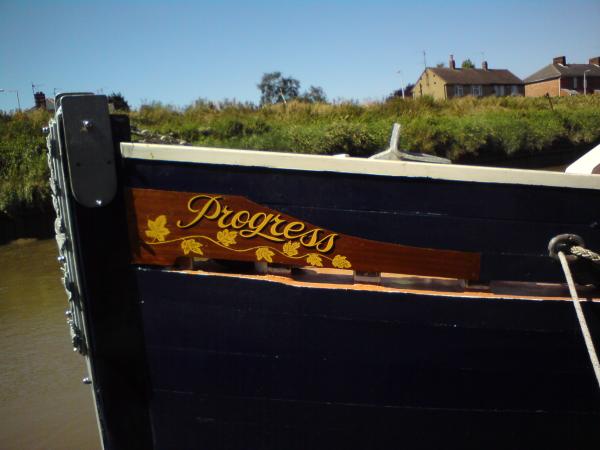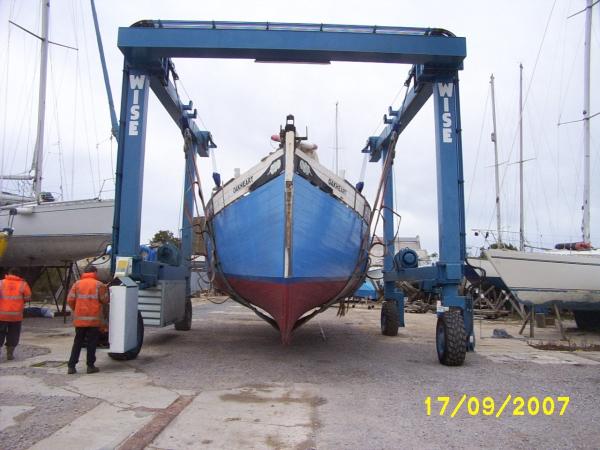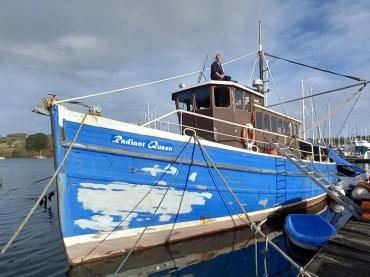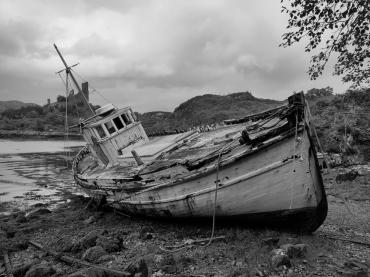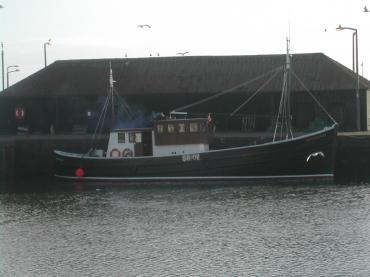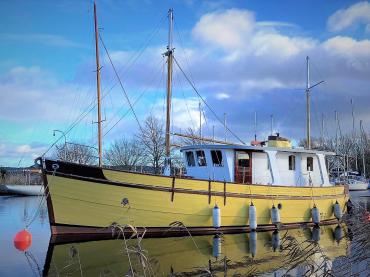

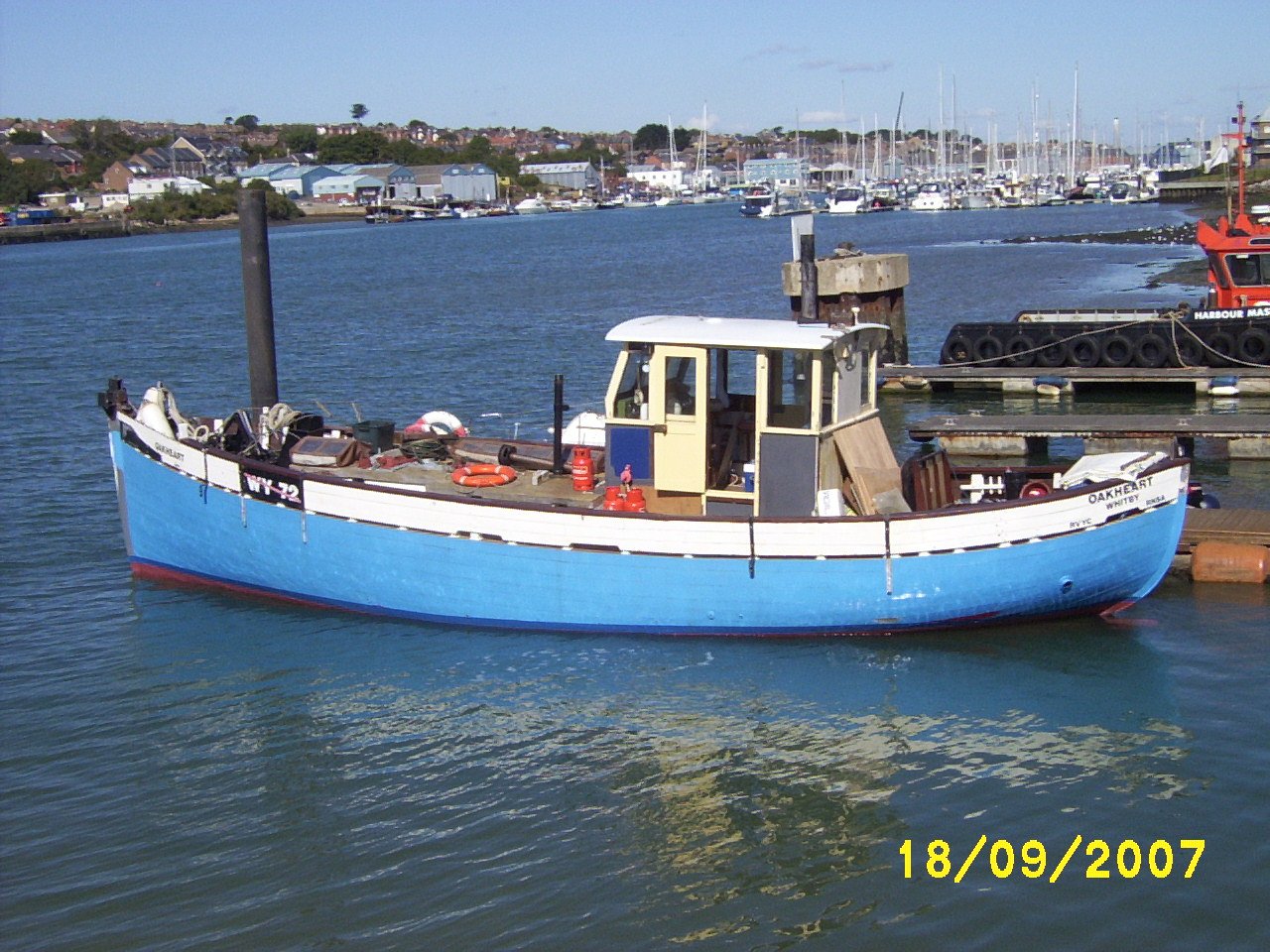
Previous names
- Progress
- 2007 Oakheart
- 1967 - 1989 Ate of Whitby
- 1989 - 2007 Oakheart
Details
Construction
Dimensions
History
Built in 1935 by Walter Reekie at Anstruther, 'PROGRESS OF WHITBY' is a motor fishing vessel converted to a ketch. She was built as a stock vessel and the build method saw two teams of three build starboard and port through to completion in six weeks, resulting in subtle differences in construction on each side of the vessel, still visible today. First owned by three brothers of the Winspear family from Whitby. Following purchase, she was named 'PROGRESS' and operated as a fishing vessel out of Whitby, Yorkshire. During World War II she was used as an Asdic unit and the Navy erected an elongated wheelhouse over the fish hold and the Asdic equipment was installed there. She attended the Normandy landings as a submarine and mine detection vessel. Armament was reported to be one Oerlikon gun on the foredeck. After finishing Naval duty in 1945 she continued fishing until 1959 when she was sold to 2 private owners who used her for fishing trips. In 1967 she was re-registered under the name 'ATE OF WHITBY' and was converted for use as a leisure yacht.
By 1989 she was sold on and renamed OAKHEART. At this time, with various owners she was based in the Isle of Wight. 'PROGRESS' was purchased by her current owners in September 2007 and sailed under her own power to Wisbech in Cambridgeshire where she will remain for 3 years while an overhaul is completed. 'PROGRESS' was originally fitted with a Gardner 4 diesel engine driving through a Kelvin mechanical reverse gear. This was replaced in the 1960's with a BMC 6 cylinder unit driving through a Borg Warner hydraulic unit. 'PROGRESS' is now fitted with a Gardner 5LW built in 1947, rebuilt in 2010 and driving through a PRM 750 hydraulic reverse gear. A new propellor was also installed at this time. Her structural rebuild has required the replacement of five upper frames and her engine beds. Several upper boards were also replaced at this time.
The removal of the cast iron keel shoe, installed by the Navy in 1940, was necessary to enable her keel to be strengthened. This shoe was the mounting point for the ASDIC unit. Her conversion to a ketch for pleasure use has required a new wheelhouse which is considerably larger than her three man fishing boat box. However it is still smaller than the unit installed by the Navy! 'PROGRESS' now sports a new mizzen and foremast which is used primarily for launching the dinghy, much in keeping with the original purpose of unloading her fish hold. This foremast remains lowered while at sea. Back in her original livery of 'Oxford Blue' with gold bow lettering and hardwood topsides she was re launched in July 2010 and is now undergoing shake downs. 'PROGRESS' raised some interest locally on the news and a YouTube link (http://www.youtube.com/watch?v=R5z9vUQ-Ykw&feature=related)
Significance
1. What is the vessel’s ability to demonstrate history in her physical fabric?
Evidence for designs, functions, techniques, processes, styles, customs and habits or uses and associations in relation to events and people. How early, intact or rare these features are may impact on significance.
PROGRESS OF WHITBY is carvel construction built from locally sourced larch on oak frames on the East Coast of Scotland, with her fastenings reflecting a period of change from the use of wrought iron to cheaper refined steel. She was built to a ‘kit’ format allowing frames to be pre sawn and seasoned in the yard prior to construction. This system of build is evident in her fabric with a number of frames having markings in Roman numerals. The build method saw two teams of three build starboard and port through to completion in six weeks, resulting in subtle differences in construction on each side of the vessel, still visible today.
PROGRESS OF WHITBY retains her original hull form with some later changes to her deck and wheelhouse. Her samson posts were removed by the crew being found troublesome when dragging or trawling. Her chain operated steering from the wheelhouse ran below deck to keep the after deck clear. Whilst fishing she sailed with minimal free-board when fully laden preventing the installation of through hull fittings. Bilge pumps discharged across the deck, exhaust was dry and the cooling water telltale still exists at a high level. She retains her foremast and mizzen from her original use as a fishing vessel.
The only external evidence of change to the hull is the installation of skin fittings to accommodate modern equipment. Her wheelhouse was changed in June 1940 when she was requisitioned for service and in 1943 a hydrophone unit was fitted beneath the keel as part of her conversion. This keel was also strengthened and an internal bronze floor fitted, which still exists today. A variety of winches, deck equipment and a machine gun on her foredeck significantly weakened the deck beams and boards which have since been replaced with oak and larch. The main engine beds have been replaced and a traditional Gardner unit similar to her original engine has been fitted. All alterations in the last decade have used like-for-like materials and construction techniques.
2. What are the vessel’s associational links for which there is no physical evidence?
Associations with people or places. Off-ship research.
PROGRESS OF WHITBY has links to the East Coast of Scotland in terms of design and build, being constructed at the well-known yard of Walter Reekie and Sons, Anstruther. She was one of five vessels selected in 1935 for the ‘Whitby Fish Trading Company’ and the last known remaining survivor of this group. She remained in operation with the same Whitby family until she was sold out of fishing in 1959, giving her strong associations to the industry in that area. PROGRESS OF WHITBY was one of nine vessels called up for service from Whitby during the Second World War. She was requisitioned first for use as a Harbour Defence Vessel by the Royal Naval Patrol Service in Grimsby Harbour, changing to Boom Defence operations in 1943 and was later converted to a hydrophone vessel. PROGRESS OF WHITBY is well documented through a photographic archive which covers her build to the present day. She has been recorded on the National Register of Historic Vessels since 1998.
3. How does the vessel’s shape or form combine and contribute to her function?
Overall aesthetic impact of the vessel, her lines, material she was built from and her setting. Does she remain in her working environment?
PROGRESS OF WHITBY’s hull is full amidships with slight tumble home and increasing volume as she rolls to the sea, with her vertical stem and fine lines forward of the fish hold reducing rise to a swell and cutting through the seas. Her long keel, supporting the large rudders, cruiser stern and hard forefoot all combined to give her good stability whilst fishing. Her design was therefore particularly suited to the difficult conditions that are frequently encountered in the North Sea and for her mixed type of fishing – line, net and pots. With large diesel engines forming the principal power method, PROGRESS OF WHITBY had clearer decks and increased stowage on deck than many earlier fishing vessels. Aesthetically she is every inch the commercial fishing boat of the period and the changes undertaken in the mid 1960s to convert her to a yacht have not taken away her identity, charm or purposeful presence. PROGRESS OF WHITBY remains operational and is in use as a leisure vessel in private ownership on the East Coast.
Source: NHS-UK team & vessel owner, 03 March 2017.
Sources
Old Gaffer's Association Member's Handbook and Boat Archive, 1993
Own this vessel?
If you are the owner of this vessel and would like to provide more details or updated information, please contact info@nationalhistoricships.org.uk

